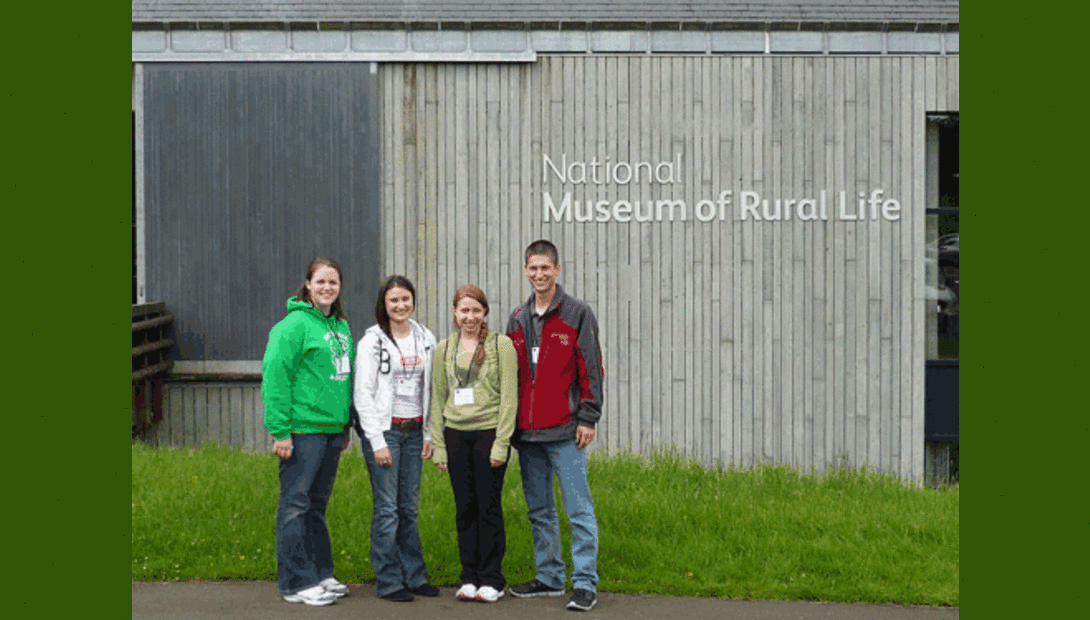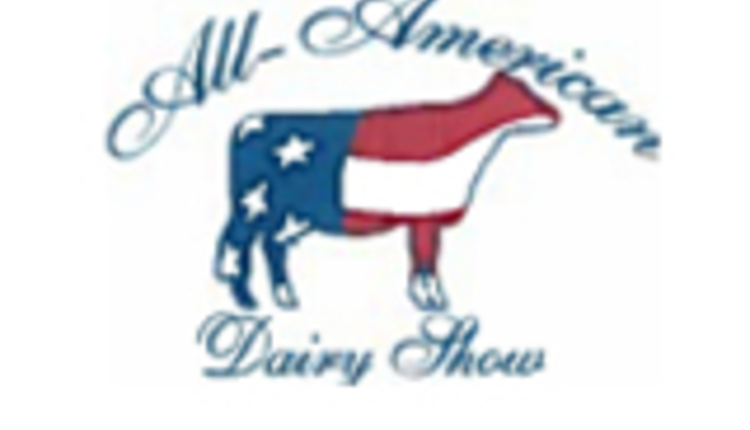Youth compete in a variety of contests like dairy judging, dairy bowl and cattle exhibitions. They are known to put in hours of preparation during team practices or train their cattle in the yard for weeks.
They start at the local contests and advance to the state and national levels. Some competitions require a considerable amount of driving and entry fees. National contests also have the additional cost of air travel and hotels. And, if the youth activity involves showing cattle, their transportation needs to be considered, too.
Judging and dairy bowl teams can easily spend $3,000 for a group of four, plus a coach, to travel to national contests. Some states lend financial support toward the team's expenses at the national level. Depending on which state a team travels from, though, it is sometimes difficult to gain enough financial assistance. It would not be uncommon for a qualifying team to fund 75 percent of their national travel expenses. That can leave a short fall for the youth, and most likely a cost for parents to fill. The volunteer coaches also have to pay their own way.
Some states have generous donors or long-established funds to cover some of the costs. What is not covered through fundraisers, falls on the shoulders on those very individuals who already worked so hard to earn the right to compete. While winning is the ultimate competitive goal, there is now the added pressure of funding to advance to the next level.
International travel opportunities have been extended to the winning 4-H, post-secondary and university dairy judging teams from World Dairy Expo. The top three teams in each division are invited to judge at the Royal Highland Show in Edinburgh, Scotland the following summer. The top three National FFA Dairy Judging teams also are invited to judge in the contest. The team members fundraise and/or pay $5,000 per person for the two-week tour that includes the contest and sight-seeing in popular European cities.

This California trio from Modesto Junior College gets ready to compete in the judging contest in Scotland. All contestants wear white lab coats to judge.
At the 2012 National 4-H Dairy Bowl contest, the top three teams were offered a travel stipend to attend a week-long tour of agriculture in Australia and the Sydney Royal Easter Show. The donation of $5,000 was divided among the top three teams. That still leaves a $4,000 price tag for each team member if they choose to participate in this experience.
If you are fortunate enough to have a heifer or cow that does well at the state level, the temptation to stand against the best in the country is strong. Travel to World Dairy Expo or the Royal Winter Fair can easily run thousands of dollars. The reward could be nominal premiums, the value of international exposure for your animal or herd, and the chance for the animal to be recognized as the best in North America. If the animal is not sold, the balance sheet tips to unprofitable, but the precious memories of parading on the colored shavings can be priceless.
While winning the state or national contest was a big investment in time and preparation over the years, the biggest cost may be paying for the "reward trip." These international trips are once-in-a-lifetime travel opportunity and few pass on them. The memories they make with teammates in foreign lands will be with them forever.
What do you think? Should these reward trips even be offered when the cost is so high? Should more be done on the local or state level to ensure enough money is available to assist in these trips when youth earn the right to attend? Or, should such funds be used locally so more participants can benefit? Rural communities are often over-tapped by contributions that support more youth and reach a broader audience in their local communities. Is their generosity already at its limit? Or, should rewarding youth who excel be more common so it encourages other young people to positively develop their variety of talents? You can comment below.
They start at the local contests and advance to the state and national levels. Some competitions require a considerable amount of driving and entry fees. National contests also have the additional cost of air travel and hotels. And, if the youth activity involves showing cattle, their transportation needs to be considered, too.
Judging and dairy bowl teams can easily spend $3,000 for a group of four, plus a coach, to travel to national contests. Some states lend financial support toward the team's expenses at the national level. Depending on which state a team travels from, though, it is sometimes difficult to gain enough financial assistance. It would not be uncommon for a qualifying team to fund 75 percent of their national travel expenses. That can leave a short fall for the youth, and most likely a cost for parents to fill. The volunteer coaches also have to pay their own way.
Some states have generous donors or long-established funds to cover some of the costs. What is not covered through fundraisers, falls on the shoulders on those very individuals who already worked so hard to earn the right to compete. While winning is the ultimate competitive goal, there is now the added pressure of funding to advance to the next level.
International travel opportunities have been extended to the winning 4-H, post-secondary and university dairy judging teams from World Dairy Expo. The top three teams in each division are invited to judge at the Royal Highland Show in Edinburgh, Scotland the following summer. The top three National FFA Dairy Judging teams also are invited to judge in the contest. The team members fundraise and/or pay $5,000 per person for the two-week tour that includes the contest and sight-seeing in popular European cities.

At the 2012 National 4-H Dairy Bowl contest, the top three teams were offered a travel stipend to attend a week-long tour of agriculture in Australia and the Sydney Royal Easter Show. The donation of $5,000 was divided among the top three teams. That still leaves a $4,000 price tag for each team member if they choose to participate in this experience.
If you are fortunate enough to have a heifer or cow that does well at the state level, the temptation to stand against the best in the country is strong. Travel to World Dairy Expo or the Royal Winter Fair can easily run thousands of dollars. The reward could be nominal premiums, the value of international exposure for your animal or herd, and the chance for the animal to be recognized as the best in North America. If the animal is not sold, the balance sheet tips to unprofitable, but the precious memories of parading on the colored shavings can be priceless.
While winning the state or national contest was a big investment in time and preparation over the years, the biggest cost may be paying for the "reward trip." These international trips are once-in-a-lifetime travel opportunity and few pass on them. The memories they make with teammates in foreign lands will be with them forever.
What do you think? Should these reward trips even be offered when the cost is so high? Should more be done on the local or state level to ensure enough money is available to assist in these trips when youth earn the right to attend? Or, should such funds be used locally so more participants can benefit? Rural communities are often over-tapped by contributions that support more youth and reach a broader audience in their local communities. Is their generosity already at its limit? Or, should rewarding youth who excel be more common so it encourages other young people to positively develop their variety of talents? You can comment below.








